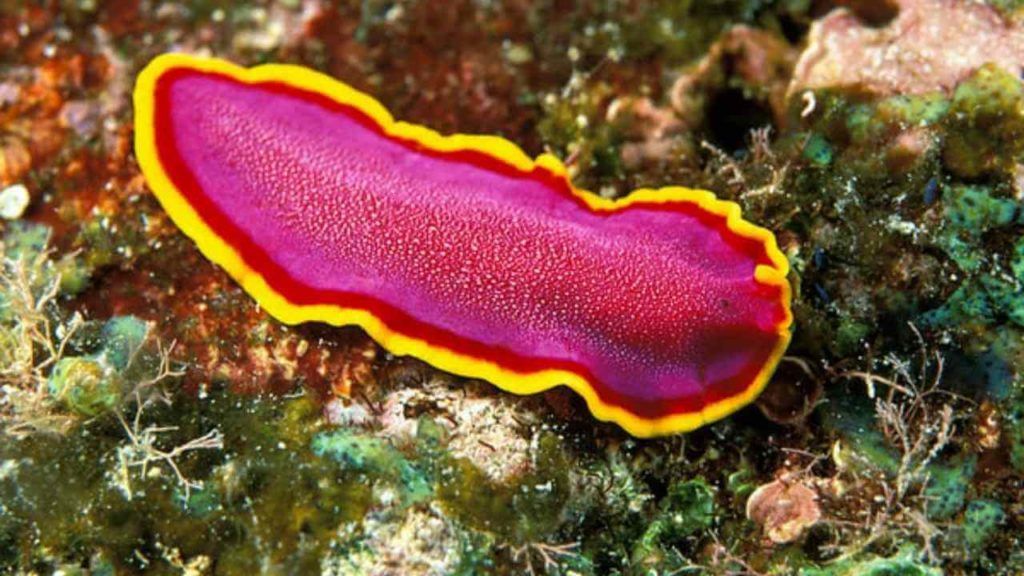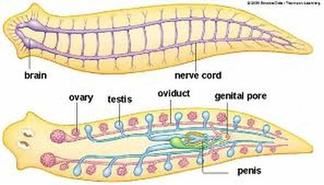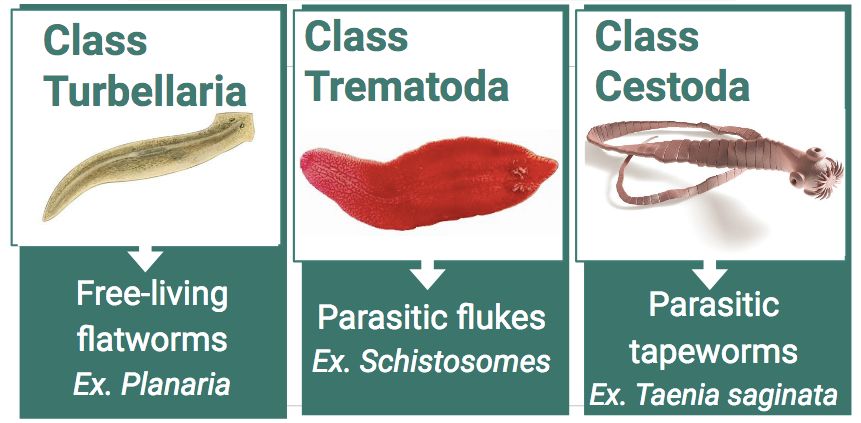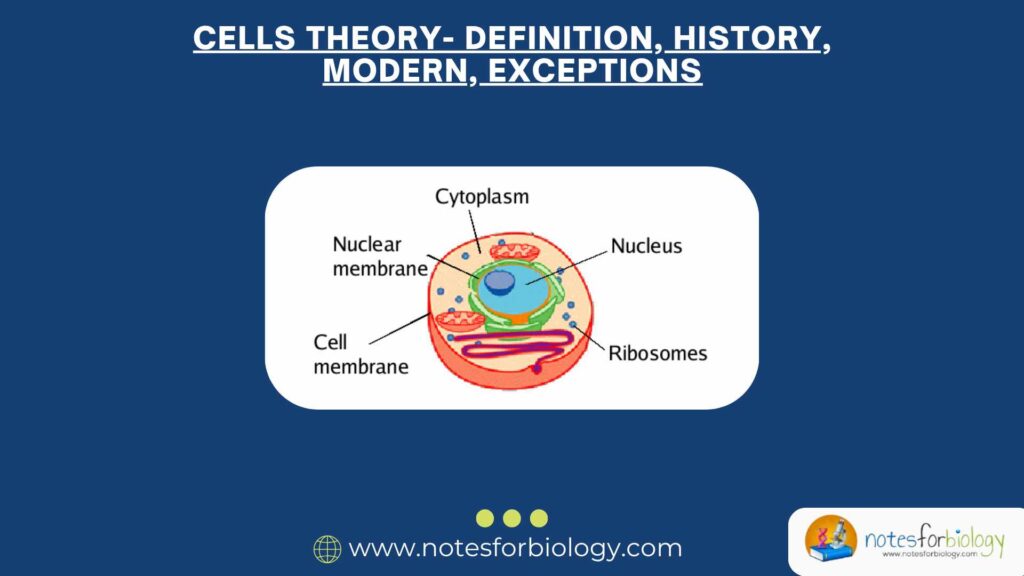Introduction
Phylum Platyhelminthes is a group of simple, soft-bodied invertebrate animals commonly known as flatworms, characterized by their flattened, bilaterally symmetrical bodies, lack of a true body cavity (acoelomate), and having three tissue layers (triploblastic), with most species being either free-living or parasitic. The animal kingdom is incredibly diverse, containing millions of species, from tiny insects to large mammals. Among the simplest animals are those belonging to Phylum Platyhelminthes, commonly known as flatworms. These animals are fascinating because they have very simple body structures compared to more complex animals but show a range of lifestyles from free-living to parasitic.

The name Platyhelminthes comes from Greek words:
- Platy = flat
- Helminth = worm
So, these are literally “flat worms.”
In this guide, we’ll explore their general characteristics and how scientists classify them into different groups.
Table of Contents
General Characteristics of Phylum Platyhelminthes
1. Body Shape and Symmetry
- Flatworms have flattened, soft, ribbon-like bodies that are thin from top to bottom.
- Their bodies are bilaterally symmetrical, which means if you cut them down the middle, the left and right sides are mirror images.
- They have a distinct head region (cephalization) where sensory organs and nerve cells concentrate.
2. Body Layers and Tissues
- Platyhelminthes are triploblastic, meaning their bodies develop from three primary layers of cells:
- Ectoderm (outer layer)
- Mesoderm (middle layer)
- Endoderm (inner layer)
- They are the simplest animals to have these three layers, which allows for more complex organs and tissues.
3. Body Cavity (Coelom)
- They are acoelomates, which means they lack a true body cavity (coelom).
- Instead, the space between their organs is filled with a solid tissue called parenchyma.
4. Digestive System
- Platyhelminthes have an incomplete digestive system with only one opening that serves as both mouth and anus.
- Food enters and waste exits through the same opening.
- The digestive system may be a simple sac or branched cavity to distribute food.
5. Circulatory and Respiratory Systems
- They lack specialized circulatory and respiratory systems.
- Because they are flat and thin, oxygen and nutrients can diffuse directly through their skin.
- Their bodies are adapted to maximize diffusion by having a large surface area compared to volume.
6. Nervous System
- Their nervous system consists of a pair of nerve cords running along the body and a concentration of nerve cells forming a simple brain-like structure (ganglia) near the head.
- They have sensory organs such as eyespots (ocelli) that detect light.
7. Reproduction

- Platyhelminthes are hermaphroditic, meaning each individual has both male and female reproductive organs.
- They can reproduce both sexually and asexually.
- Sexual reproduction involves internal fertilization.
- Many flatworms have the ability to regenerate lost body parts.
8. Habitat
- Flatworms live in various environments:
- Free-living species mostly live in freshwater, marine, or moist terrestrial habitats.
- Parasitic species live inside the bodies of animals, including humans.
Classification of Phylum Platyhelminthes
Platyhelminthes are broadly classified into four classes based on their lifestyle, body structure, and complexity:

Class 1: Turbellaria
- Mostly free-living flatworms.
- Found in freshwater, marine, and moist terrestrial environments.
- Have cilia on their undersides to help them glide.
- Body is soft, flat, and covered with a protective epidermis.
- Example: Planaria — a common freshwater flatworm studied in biology.
Key Features:
- Well-developed digestive system with a branched gut.
- Simple eyespots that sense light.
- Can regenerate lost parts quickly.
Class 2: Trematoda
- Known as flukes.
- They are parasitic flatworms that live inside the organs of their hosts (like liver, blood vessels, intestines).
- Have suckers and hooks for attachment.
- Complex life cycles often involve more than one host (usually a snail as the first host and a vertebrate as the final host).
- Example: Fasciola hepatica (liver fluke), Schistosoma (blood fluke).
Key Features:
- Body covered by a tough outer layer called tegument.
- No cilia; adapted for parasitic life.
- Reduced or absent digestive system; absorb nutrients from host.
Class 3: Cestoda
- Known as tapeworms.
- They are endoparasites that live in the intestines of vertebrates.
- Have a long, ribbon-like body made up of segments called proglottids.
- Lack a digestive system entirely; absorb nutrients through their skin.
- Attach to the host’s intestine using a structure called a scolex which has suckers and sometimes hooks.
- Example: Taenia solium (pork tapeworm), Taenia saginata (beef tapeworm).
Key Features:
- Body divided into scolex, neck, and proglottids.
- Highly specialized for parasitic lifestyle.
- Reproductive organs present in each proglottid.
Class 4: Monogenea
- Parasites mostly found on the skin or gills of fish.
- Have a simple life cycle, usually involving only one host.
- Body is flattened and oval-shaped.
- Attach to hosts using hooks or suckers.
- Example: Gyrodactylus.
Key Features:
- Mostly ectoparasites (live on the surface).
- Simple life cycle.
- Specialized attachment organs.
Detailed Description of Each Class
Class Turbellaria — The Free-living Flatworms
- Turbellarians are the only class in Platyhelminthes that are mostly non-parasitic.
- They are found in freshwater ponds, streams, oceans, and even moist soil.
- Their movement is enabled by tiny hair-like structures called cilia on their ventral surface.
- The digestive system has a mouth on the ventral side that opens into a branched gut.
- Nervous system: two nerve cords with a pair of cerebral ganglia (a simple brain).
- They exhibit amazing regenerative powers; if cut into pieces, many species can regrow a whole new worm.
- Reproduction can be sexual or asexual (by fission).
Class Trematoda — The Flukes
- Trematodes are obligate parasites mostly found in the internal organs of vertebrates.
- Their body is covered by a protective tegument to resist the host’s digestive enzymes and immune system.
- They have suckers for attachment to the host.
- Trematodes have a complex life cycle involving multiple hosts (usually a snail as intermediate host and a vertebrate as the final host).
- They cause diseases such as schistosomiasis and liver fluke disease in humans and animals.
- Their reproductive system is well developed to produce thousands of eggs.
Class Cestoda — The Tapeworms
- Tapeworms are highly specialized endoparasites living in the intestines of vertebrates.
- They have no digestive tract because they absorb already digested food directly through their skin.
- Their bodies are segmented into proglottids, each containing male and female reproductive organs.
- The head (scolex) attaches to the intestinal wall using hooks and suckers.
- Tapeworm infections occur when undercooked meat containing larvae is eaten.
- Diseases caused by tapeworms include taeniasis and cysticercosis.
Class Monogenea — Fish Parasites
- Monogeneans are external parasites usually found on fish skin or gills.
- They have a simple life cycle with one host.
- They use specialized hooks and suckers to attach to their hosts.
- Mostly cause diseases in fish, impacting aquaculture.
Importance of Phylum Platyhelminthes
Ecological Importance
- Free-living flatworms are important predators and scavengers in aquatic ecosystems.
- Parasitic flatworms regulate host populations and impact ecosystems.
Medical Importance
- Many parasitic flatworms cause serious diseases in humans and animals.
- Understanding their life cycles helps in disease control.
Scientific Importance
- Flatworms like Planaria are used in research on regeneration and developmental biology.
Summary Table
| Feature | Phylum Platyhelminthes |
|---|---|
| Body Symmetry | Bilateral |
| Body Shape | Flattened, soft |
| Body Cavity | Acoelomate (no true cavity) |
| Digestive System | Incomplete or absent |
| Nervous System | Ladder-like with cerebral ganglia |
| Circulatory System | Absent |
| Respiratory System | Absent (diffusion) |
| Reproduction | Sexual and asexual (hermaphroditic) |
| Classes | Turbellaria, Trematoda, Cestoda, Monogenea |
| Habitat | Freshwater, marine, parasitic in animals |
Conclusion
Phylum Platyhelminthes consists of some of the simplest animals with remarkable adaptations that allow them to thrive in a variety of environments. From free-living flatworms gliding in ponds to dangerous parasites living inside humans, flatworms play important roles in nature and medicine. Their simple body plan, despite lacking many complex organs, shows how evolution can produce diverse life forms suited for different lifestyles.
FREQUENTLY ASKED QUESTIONS
What is Platyhelminthes?
Platyhelminthes are a group of simple, soft-bodied animals called flatworms that have flattened bodies, bilateral symmetry, and no true body cavity. They can be free-living (like Planaria) or parasitic (like tapeworms and flukes), and are among the simplest animals with a brain and three tissue layers.
What are the characteristics of Platyhelminthes?
Platyhelminthes are simple, flat-bodied animals with bilateral symmetry, no body cavity, and a simple nervous system, and they can be free-living or parasitic with both sexual and asexual reproduction.
What are the examples of Platyhelminthes ?
Examples of Platyhelminthes include Planaria, Fasciola hepatica, Schistosoma, Taenia solium, and Gyrodactylus.
Related Articles




